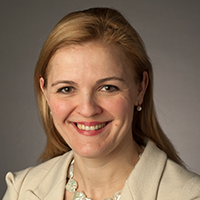Past Coverage of ACR 2016Past Coverage of ACR 2016 Return To RheumReports Home
Rheumatology by Moonlight

While mythology has oft painted the moon in soothing tones of light, the moon – or "supermoon" during the ACR meeting in Washington DC – will cast a different hue: orange. Not so much for the ending of the harvest but rather the harbinger of political change. I hope to get a picture of the supermoon over the White House and am curious if that orange hue will be there – or maybe it's my imagination playing tricks in response to last week's election results.
I encourage everyone to look up at the largest supermoon since 1948 in the next few nights. The moon will be at its perigee (closest point to Earth in its orbit) and will appear about 15% bigger than usual. The moonlight should be soothing and familiar to conference goers given its resemblance to the sliver hues of laptops and tablets reflecting off faces in plenary sessions. Much work can be completed in good moonlight, as evidenced by great works of music (e.g. Beethoven, "Moonlight Sonata,", Ella Fitzgerald's "Moonlight in Vermont"). Many conference goers can likely attest to welcoming the comfort of moonlight whilst preparing their abstracts before midnight deadlines.
All humans look up - it's inevitable whatever our age and whatever we spend our life doing. Here in Washington, I look forward to seeing the sites which will undoubtedly be more spectacular in the supermoon light. And with recent events, I am humbled and hopeful when remembering what the late NASA astronaut Edgar Mitchell said after his lunar experience: "You develop an intense global consciousness, a people orientation, an intense dissatisfaction with the state of the world, and a compulsion to do something about it. From out there on the moon, international politics look so petty."
Share This Report
About the Author

Dr. Stephanie Keeling is an Associate Professor at the University of Alberta. Her research interests include lupus and connective tissue disorders.
View Full Bio





